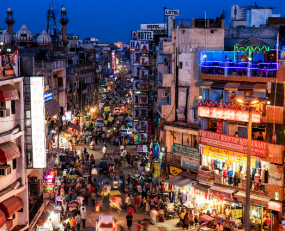
The Indian sub-continent is being convulsed by the COVID-19 quarantine measures. Not only its ports and airports but its roads are being overwhelmed by a vast wave of people and goods.
Narendra Modi announced a policy of so-called ‘lockdown’ on the 24th March, prompting many of the inhabitants of India’s major cities to return to the countryside, there being no work for them.
This wave of people, possibly in the hundreds of millions, poured onto buses, trains, boats or just walked to their villages. The consequence has been that roads have become blocked for all other transport, most especially trucks. Compounding this, many truck drivers joined the movement out of the cities, so even as the crowds subside there is a very much reduced availability of freight vehicles. Even worse, parts of India’s provincial border system appears to have broken down, with a variety of different reports suggesting that it has become difficult to access the paperwork need to cross the country, the civil servants having left their posts. Even though the Indian railway experienced a surge of passengers, rail freight seems less affected.
India’s air freight system is also suffering. In theory, air freight operations are not subject to quarantine but a combination of near-collapse of belly freight provision, shortage of land-side transport – especially trucks – and bureaucratic confusion at customs has led to severe shortage of freight capacity. This has even affected the viability of freighter operations. There are all sorts of reports of cargo piling-up at airport cross-docks although there are also reports of airports moving freight. In truth, it seems to be a mixture of the two.
Ports are also congested with quarantine rules restricting the ability to unload vessels. In neighbouring Bangladesh, the port of Chittagong is experiencing severe congestion not least from the imbalance of imports and exports leading to excess containers building-up in demurrage and beginning to affect the ability to enter and leave the port. Much of Bangladesh’s clothing sector is still working and its road and rail freight sectors are functioning, however, it is the impact of cancelled export orders that is beginning to strangle the logistics infrastructure around Chittagong.
As in much of the rest of the world it is unclear how long all of this will last. Although India exposure to global trade is much less than other economies of its size the impact of this crisis will become increasingly severe. India’s lockdown policy is supposed to last three weeks but its effects will last much longer.
For all the latest COVID-19 coverage from Ti, visit our COVID-19 Hub.
Source: Transport Intelligence, March 31, 2020
Author: Thomas Cullen